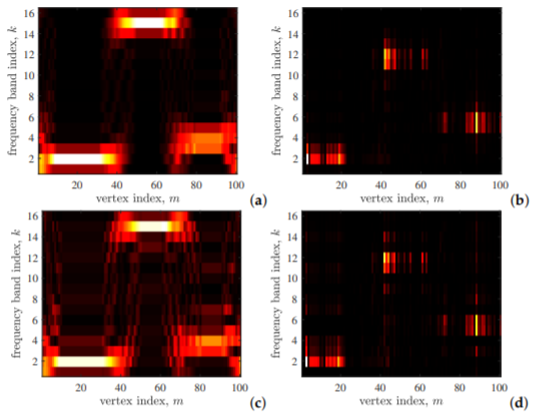
The paper presents an analysis and overview of vertex–frequency analysis, an emerging area in graph signal processing. A strong formal link of this area to classical time–frequency analysis is provided. Vertex–frequency localization-based approaches to analyzing signals on the graph emerged as a response to challenges of analysis of big data on irregular domains. Graph signals are either localized in the vertex domain before the spectral analysis is performed or are localized in the spectral domain prior to the inverse graph Fourier transform is applied. The latter approach is the spectral form of the vertex–frequency analysis, and it will be considered in this paper since the spectral domain for signal localization is well ordered and thus simpler for application to the graph signals. The localized graph Fourier transform is defined based on its counterpart, the short-time Fourier transform, in classical signal analysis. We consider various spectral window forms based on which these transforms can tackle the localized signal behavior. Conditions for the signal reconstruction, known as the overlap-and-add (OLA) and weighted overlap-and-add (WOLA) methods, are also considered. Since the graphs can be very large, the realizations of vertex–frequency representations using polynomial form localization have a particular significance. These forms use only very localized vertex domains, and do not require either the graph Fourier transform or the inverse graph Fourier transform, are computationally efficient. These kinds of implementations are then applied to classical time–frequency analysis since their simplicity can be very attractive for the implementation in the case of large time-domain signals. Spectral varying forms of the localization functions are presented as well. These spectral varying forms are related to the wavelet transform. For completeness, the inversion and signal reconstruction are discussed as well. The presented theory is illustrated and demonstrated on numerical examples.